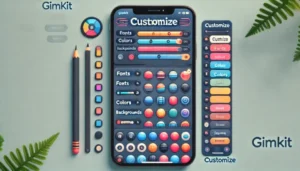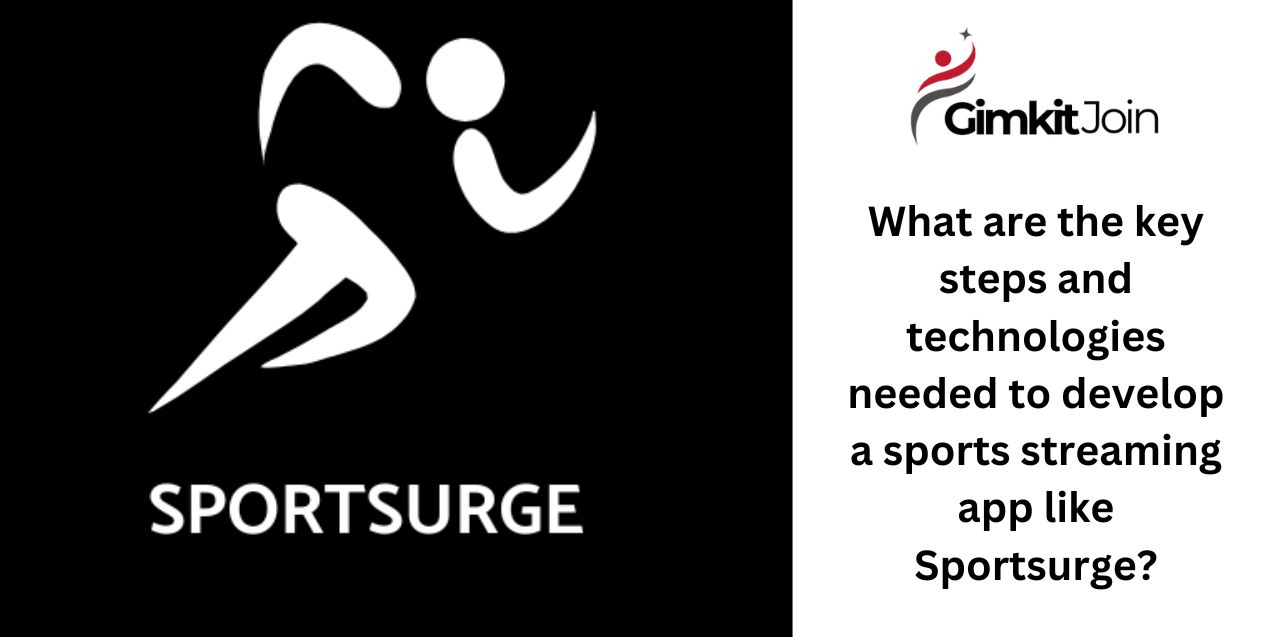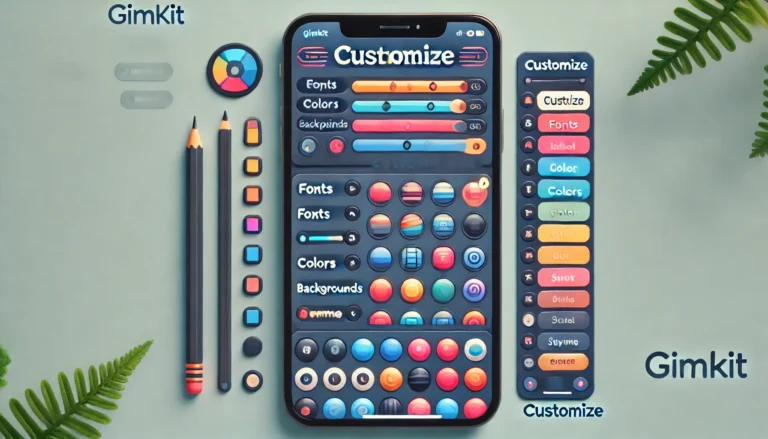To create a successful sports streaming app like Sportsurge, essential steps include conducting thorough market research, defining core features, selecting the right technology stack (including HLS and CDN for streaming), and planning an intuitive user interface. Critical features such as multi-device compatibility, real-time updates, and smooth streaming are non-negotiable. Developers must also plan revenue models, ensure legal compliance, and conduct rigorous testing before launching.
Table of Contents
How to Create a Sports Streaming App Like Sportsurge Effectively
The demand for sports streaming apps is growing exponentially, driven by users seeking real-time access to live sports events from anywhere, at any time. Platforms like Sportsurge have set the benchmark for successful sports streaming by offering high-quality content and user-friendly features. If you’re aiming to build a sports streaming app, this guide will break down all the essential components, from market research to launch.
Market Research and Planning
Building a sports streaming app without solid market research is akin to playing a game without knowing the rules. Understanding your target audience, competitors, and trends in the sports streaming ecosystem is critical.
- Analyzing Market Demand: The sports streaming market is fiercely competitive, and understanding user demand is essential. For instance, users today expect 4K streaming, multi-language commentary, and access to exclusive live events. Research the most-watched sports and the platforms currently dominating the market.
- User Behavior Insights: Knowing what drives user engagement helps define the app’s core features. Are your users die-hard sports fans looking for exclusive content, or casual viewers interested in post-match analysis?
- Defining Core Features: Based on your research, outline the app’s functionality. Will it support live streaming only, or offer on-demand content, real-time stats, and interactive chat options?
The planning phase should culminate in a clear roadmap, balancing user needs and the business goals. By taking time to conduct a detailed analysis, you’ll be better prepared to develop a product that resonates with users.
Essential Features of a Sports Streaming App
What makes a sports streaming app like Sportsurge successful? It’s a blend of high-end features that prioritize user convenience and provide an immersive sports viewing experience. Here’s a breakdown of must-have features:
- Live Streaming: The heart of the app. Users must be able to watch live events without buffering. Support for both SD and HD streams is essential, with auto-adjustments based on network strength.
- Multi-Device Compatibility: Seamless streaming across devices—smartphones, tablets, desktops, and even smart TVs—enhances accessibility and user retention.
- User-friendly Interface: Intuitive navigation is critical. Users should be able to locate live matches, highlights, or replays with ease. Avoid unnecessary complexity.
- Real-time Updates and Notifications: Keep users engaged with live scores, updates, and personalized notifications about their favorite teams or upcoming games.
- On-Demand Video Playback: In addition to live streaming, offer recorded highlights, replays, and in-depth analyses for users who missed the live action.
- Social Sharing & Community Engagement: Integrating social media sharing options or chat features enhances interaction, creating a community around the app.
- Multi-language Support: Catering to a global audience means offering commentary or interface options in various languages.
- High-Quality Streaming: Incorporating adaptive bitrate streaming to adjust the video quality based on the user’s internet connection ensures smooth playback even on slower networks.
These features elevate the user experience, keeping them glued to your app and minimizing churn.
Technology Stack for Sports Streaming App Development
The success of a sports streaming app like Sportsurge lies not only in its features but also in the technology stack that powers it.
- Video Streaming Protocols: High-quality live streaming is essential, and you need the right protocols to achieve this.
- HLS (HTTP Live Streaming): One of the most popular protocols, HLS breaks video into smaller chunks for adaptive bitrate streaming, ensuring smooth playback across different devices.
- RTMP (Real-Time Messaging Protocol): Widely used for low-latency streaming, often for live sports events.
- Backend Frameworks: For the backend, reliable frameworks like Node.js or Django help in handling numerous simultaneous users while maintaining fast, responsive services.
- Cloud Infrastructure: Utilizing cloud platforms such as AWS or Google Cloud ensures scalability and reliability. Cloud storage helps manage vast amounts of video content, while cloud-based servers enhance performance.
- Content Delivery Networks (CDN): A CDN such as Akamai or Cloudflare distributes your content across servers globally, ensuring users experience minimal buffering and fast load times, no matter their location.
- Database: For storing user data, events, and streaming schedules, use robust databases like MongoDB or PostgreSQL.
- Front-end Development: React or Vue.js can be employed to build a responsive, dynamic front end that works seamlessly on all devices.
By utilizing these technologies, your app will deliver high-quality streaming and performance on par with industry leaders like Sportsurge.
Monetization Models for Sports Streaming Apps
Developing a sports streaming app is a significant investment, and planning for monetization early on is crucial. There are multiple ways to generate revenue:
- Subscription Model: Offer tiered subscription plans for different levels of access. For example, a basic plan may include live streaming in SD, while a premium plan includes HD/4K content, no ads, and exclusive events.
- Pay-per-view (PPV): For highly anticipated events, such as championship matches or exclusive interviews, PPV can be a lucrative option.
- Ad-based Monetization: Allowing in-app advertisements, such as banner ads, video ads, or sponsored content, can generate revenue without charging the user.
- Freemium Model: Provide free access to basic features with limited live streaming options, but offer premium features and content behind a paywall.
- Sponsorship and Partnerships: Partner with sports organizations, leagues, or teams for branded content or exclusive broadcasting rights.
By diversifying the revenue streams, you can ensure steady income while offering flexibility to users based on their preferences.
User Experience and Design
The user experience (UX) and design of your sports streaming app can make or break its success. Here are some crucial elements to focus on:
- Intuitive User Interface (UI): A cluttered interface can overwhelm users. Focus on clean, minimal design with easy access to essential features such as live streams, match schedules, and user settings.
- Personalized Recommendations: By using AI algorithms, you can recommend content based on a user’s preferences, previous viewing history, and favorite teams or leagues.
- Simple Navigation: Clear categorization of sports, matches, and replays improves usability. Make it easy for users to find exactly what they’re looking for without any hassle.
- High-Quality Streaming: Ensure that your app supports adaptive bitrate streaming, allowing users to watch high-quality videos even if they have inconsistent internet connections.
- Light and Dark Mode: Offering multiple themes, such as light and dark mode, can enhance the viewing experience based on individual preferences.
- Offline Viewing: Offering downloadable content for offline viewing can be a major advantage for users with limited access to the internet.
A well-designed app with a focus on UX will not only attract users but will also ensure long-term retention.
Compliance and Legal Considerations
When developing a sports streaming app, it’s crucial to navigate the maze of legal and regulatory requirements.
- Licensing and Copyrights: Broadcasting live sports requires legal permission and rights. Without acquiring proper licenses, you risk lawsuits and app shutdowns. Partner with sports leagues or TV networks to acquire legal rights for streaming.
- Adherence to Local Regulations: Depending on the region you’re operating in, different laws might apply to streaming and broadcasting. Ensure compliance with laws like the DMCA (Digital Millennium Copyright Act) in the US or GDPR (General Data Protection Regulation) in Europe.
- Content Moderation and Security: Ensure that user data is handled securely and protect the platform from piracy or unauthorized streaming through digital rights management (DRM) tools.
Failure to address these legal aspects can result in significant penalties and disruptions to your business.
Testing and Launching the App
No app launch is complete without extensive testing. Testing ensures that the app works smoothly across different platforms and scenarios:
- Performance Testing: Test for app responsiveness, load times, and the ability to handle high traffic volumes, especially during major sports events.
- Cross-platform Testing: Ensure compatibility across devices such as iOS, Android, and web browsers.
- Beta Testing: Launch a beta version to a small audience. This will provide feedback on bugs, usability issues, and performance problems, helping you improve the app before its official launch.
- Final Launch: Once testing is complete and the app is polished, plan a launch with proper marketing to attract initial users. Offer promotions or limited-time trials to drive interest and build your user base.
A well-executed testing and launch phase helps guarantee user satisfaction from day one.
FAQs
How can I create a sports streaming app like Sportsurge? Creating a sports streaming app like Sportsurge involves conducting market research, defining core features, building the right technology stack, and ensuring compliance with streaming regulations.
What technology stack is needed for a sports streaming app? Essential technologies include video streaming protocols like HLS, backend frameworks like Node.js, cloud infrastructure (AWS, Google Cloud), and CDNs like Cloudflare for efficient streaming.
What are the best ways to monetize a sports streaming app? Monetization strategies include subscription models, pay-per-view options, ad-based monetization, freemium plans, and partnerships with sports organizations.
What are the legal considerations for a sports streaming app? Key legal considerations include obtaining proper licensing for streaming sports content, adhering to regional regulations, and securing the app against unauthorized streaming.
How can I enhance the user experience in a sports streaming app? Ensure a clean, intuitive UI, offer personalized recommendations, support multi-device streaming, and enable features like real-time notifications and offline viewing.
What testing should be done before launching a sports streaming app? Conduct performance testing, cross-platform compatibility tests, and beta testing to gather feedback and fix any bugs or usability issues before the official launch.












